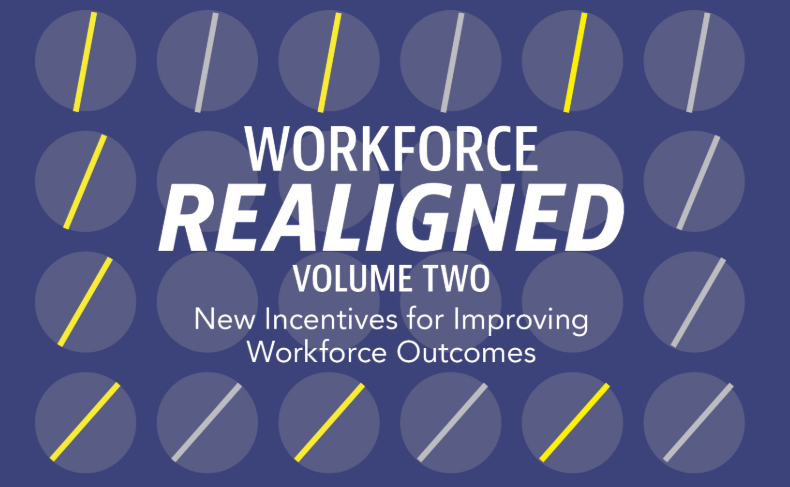

Workforce & Education Investments, Financing Workforce & Talent Innovators
Today, there are 8 million job openings in the US, but only 6.8 million unemployed workers. Opportunity is plentiful, yet countless job seekers struggle to find careers that match their skills. So, where is the disconnect?
This mismatch is what the UP Fund strives to address. Launched in 2019, the UP Fund is a $50 million pool of catalytic capital aimed at removing barriers to education and employment. Deploying capital in two forms—student financing and, more recently, organizational financing—the Fund seeks to align the incentives between students, training providers and educational institutions, and employers through an outcomes-based methodology.
For five years, the Fund has been deploying capital and measuring results. In spring of 2025, MDRC (an organization that conducts rigorous studies of programs) published its final report studying four early projects in the portfolio. These four projects offered student financing in the form of student-centered income-share agreements (ISAs). In this model, the Fund paid a student’s tuition upfront, and the student was only required to repay if they obtained a job earning above a threshold (what we call the “minimum income threshold”).
These early investments are critical in surfacing learnings, understanding the student journey and their outcomes, and assessing model feasibility, successes, and challenges. As part of its study, MDRC conducted a baseline and post-training survey with learners, interviewed training provider and ISA servicer staff, analyzed ISA servicer and training provider administrative data, and conducted longitudinal learner interviews and focus groups. Through this analysis, MDRC surfaced a number of learnings, including:
- Wage Outcomes: Average pre-program annual wages for participants who were employed prior to training was $29,207. While wage outcomes varied by training provider, MDRC found that among learners who actively reported their data and who were employed after training, the average post-program annual wages were $46,904. A smaller subset of learners—those who responded to an MDRC survey and were employed—reported an even higher average income of $52,385. The results provide evidence that the UP Fund financing has supported some learners to secure better-paying jobs. Simultaneously, 80% of survey respondents agreed it would have been very difficult to pay for training without upfront financing.
- Compliance Struggles: At the same time, MDRC’s analysis found that, as of their analysis, only 43% of participants are in compliance with their repayment obligations. Reasons for non-compliance varied, with some examples including the complexity of the ISA tool to broader financial hardship, even after securing a well-paying job.
More important than simply understanding these learnings, however, is how we apply them. We believe that this form of financing is critical for expanding access to programs that lead to higher wages for students – but there may be ways to generate this impact while lessening burdens on students. This report, and ongoing fund strategy evolution, have elucidated a few key ‘insights:’
- Centering on student outcomes can mean working with training providers and employers to assume some responsibility for repayment. While Social Finance has a laser-focus on student protections, the data above suggests that repayment compliance is still difficult, even for many students who successfully obtain jobs above the minimum income threshold. This insight illustrates that other forms of financing have potential for greater impact.
- Training students not only benefits the individual – but also employers and the broader economic ecosystem. Employer-provided training opportunities have a proven link to employee retention: per SHRM, 76% of employees say they are more likely to stay with a company that offers training opportunities. Furthermore, the investment in training is an activity with proven ROI. So, while, in general, students do see wage increases following training, employers are also incentivized to develop sustainable strategies for supporting ongoing training for their employees. Our recent launch of the ReNEW Fund, in partnership with Western Governors University (WGU), is an example of the employer ecosystem recognizing the value in and investing in training.
- While student financing may get more students ‘in the door,’ it does not address the training provider’s ability to adapt and meet the evolving needs of employers and learners. As the Fund’s portfolio weathered technology market downturns, the COVID-19 pandemic, and more, it became clear that training severely lags disruptions in the job market and alternative business models that don’t solely rely on student repayment are key for Fund success. Simultaneously, student financing alone does not address the scale of the need. Even with high-quality and effective training, providers should consider how partnering with employers and others in the ecosystem can provide a more efficient pathway to scaling up their operations.
These learnings are what led the Fund to explore a new financial product: organizational financing. Instead of customizing, and often complicating, existing student lending products that can be deployed in a more ‘student-friendly’ manner, the Fund sets out to deploy capital in a way that could enhance the capability and capacity of high-performing training and service providers. In the process, we also enable these providers to broaden the learner population they can serve.
Today, the UP Fund offers flexible, outcomes-based working capital loans directly to mission-driven organizations with proven track records. These organizations, which could be training providers, supportive service support providers, educational institutions, or employers with in-house training programs, draw down on this loan in proportion to the number of learners they can serve. In this structure, the financing and subsequent repayment obligation is tied to the company – but the impact is tied to the individual.
This model has proven both impactful and attractive to the organizations receiving financing. In the case of Upswing, the most recent company to join the UP Fund portfolio, the Fund’s investment has allowed them to serve a larger number of community colleges that would have otherwise proven too capital-intensive to support. Upswing, an education technology company offering critical support services to non-traditional students at community colleges and other educational institutions, draws funds based on how many learners they anticipate serving – and is rewarded by the Fund with a lower interest rate, as they achieve greater impact.
Another innovative model the Fund is evaluating is partnership with organizations who serve students who use Workforce Innovation and Opportunity Act (WIOA) funding to access their training. However, WIOA funding is disbursed well after the costs of training have been incurred – and many organizations cannot absorb these carrying costs. A working capital loan may help these organizations to sustain these costs, grant more students access to high-quality training, and support local governments by enabling the deployment of WIOA funding, where it would otherwise not be financially viable.
The learnings from the UP Fund will continue in the coming years. In the meantime, progress and innovation are ongoing. We continue to challenge ourselves to think differently, apply evidence-based decision making, and deploy new models to amplify the impact of our capital – and help as many people access improved economic outcomes as we can.
Related Insight

Introducing Workforce Realigned, Vol. II
Featuring 21 chapters authored by leading policymakers and practitioners, Workforce Realigned, Vol. II showcases a collection of outcomes-driven initiatives from across the United States that enhance opportunities for workers while addressing the talent demands of…